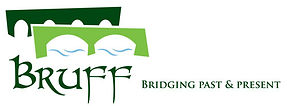History
In 1825 a new purpose built three storey building, was planned to accommodate 31 soldiers Chapel Lane, a sign of disturbed times.
Thomas Fitzgerald was the great grandfather of the late John Fitzgerald Kennedy (on his mother’s side), President of the United States of America. He left Bruff and emigrated
The F.C.J. (Faithful Companions of Jesus) Sisters came to Bruff in 1856, following an invitation from Dean Cussen. The six F.C.J. sisters set up a girls’ primary and secondary school
The Carbery Mausoleum was part of Ballygrennan Church, linked to nearby Ballygrennan Castle. Amongst others, members of the Evans and Carbery families are buried here.
St Patrick’s Monastery, a Christian Brother’s school for boys build in 1860 and seminary or classical school. De La Salle Brothers taught there until 1972.
This monument commemorates Sean Wall’s role in the struggle for Irish Independence as well as the role played by members of the East Limerick Brigade of the IRA.
Sean Wall, Brigadier, East Limerick Brigade, was born in Ardykeohane, Bruff in 1888. He was the Officer Commanding, East Limerick Brigade. Irish Republican Army and was killed in action against
At the eastern end of Chapel Lane, the site of an Old Village Pump can be found. A horseshoe-shaped platform with pump, provided an efficient drinking water supply
The imposing RIC / Garda Barracks was custom built for Bruff in the 1870’s. It is one of only three such buildings in Ireland. It was briefly besiged in 1922.
The open site beside the early RIC Barracks was where the early 19th century Flax Mill stood, later to evolve into a Cleeve’s factory and in the mid
